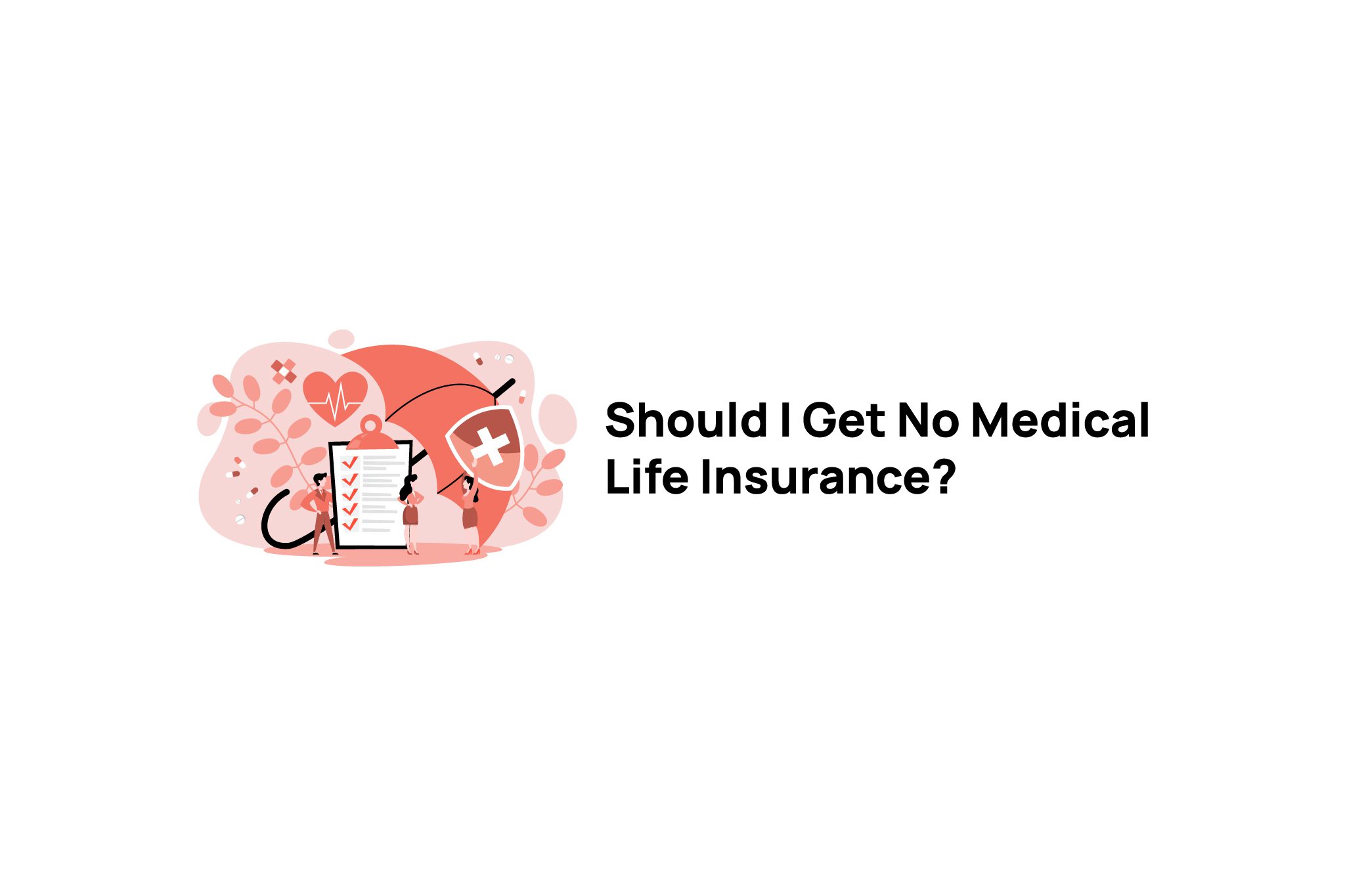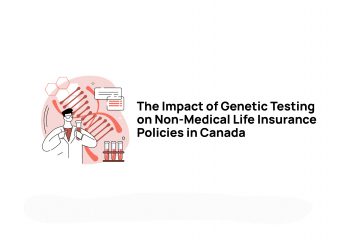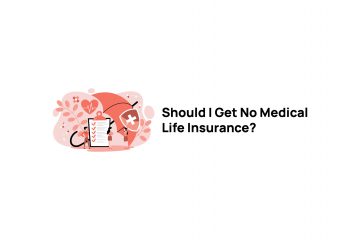For many people in Ontario of a certain vintage, they will instantly recognize the line “It’s Patrick; he took out life insurance.” This was an advertisement that was on tv in regular rotation in the 1990s. The premise of the ad was that an elderly gentleman answers the phone and exclaims to his wife that it’s their son, Patrick, and he’s called to tell them that he took out a life insurance policy. When his dad expresses interest in getting a policy for himself, he also says that he doubts he could get insurance because he is too old and has high blood pressure. Not a problem, though, according to Patrick, who goes on to tell his dad that he too could get life insurance via the non-medical policy that was available to people in the age 50-75 age bracket. Patrick assures him that this is guaranteed to issue the policy and that there was no medical exam or questionnaires required. At this point, Dad declares that it would be nice to be able to leave behind some money, and he asks Patrick for the phone number. Although this commercial isn’t around anymore (it is on YouTube), there are still many companies that provide guaranteed life insurance without medical exams or questions. With that in mind, we thought we would take a look at guaranteed and non-medical life insurance, how these products work and when it may or may not be a good fit for people.
In This Article:
- How Does Non-Medical Life Insurance Compare to Regularly Underwritten Insurance?
- Terms to Watch For
- What About Premiums?
- When is Non-Medical Insurance a Good Idea?
- Conclusion
How Does Non-Medical Life Insurance Compare to Regularly Underwritten Insurance?
Guaranteed issue insurance and non-medical insurance policies are examples of truth in advertising. For a guaranteed issue policy, typically, the only question they will ask is whether you are a smoker. As is the case with all life and health insurance policies, there are standard rates for smokers and non-smokers, so this one question establishes which rate band you fall into. Other than that, the policy is guaranteed, so they don’t bother with many other questions.
A non-medical insurance application offers you a policy without asking any ‘medical’ questions during the application. One of the differences you need to understand between a guaranteed acceptance policy and a non-medical policy is what is required for the application. Both will have no medical underwriting questions, but there will be differences between the two types of policies.
- A non-medical application may still have a questionnaire associated with it. It could include asking you questions regarding your family medical history, your lifestyle and possibly for information such as how tall you are and how much you weigh. How you answer these questions can slide you up and down a premium payment model. For example, if your age, height, weight and medical history all line up with the policy guidelines, you may qualify for the lowest premium the insurer offers for their non-medical policies.
- If your health history and lifestyle questions don’t fit within the guidelines, you could end up in a situation where you land in a higher premium range or with one of the guaranteed issue policies. These are the policies that are put in place for the hardest-to-insure applicants.
The difference between the products will come down to the premium you pay. Both are non-medical, but the lifestyle questions and the health history will influence what type of coverage you can get. The more red flags that pop up in your answers to the screening questions the higher the premium that they are going to request. No one gets turned down, they just have different premium calculation models applied to the applications.
The fact that a non-medical policy is issued immediately was always the selling feature when compared to traditional insurance applications. However, this has become a bit murkier in recent years with the rollout of simplified issue policies from many large insurers. These simplified products require you to answer some basic health and lifestyle questions, and if your answers meet predetermined criteria, they can issue policies without involving any further underwriting. The key difference between these simplified underwriting policies and non-medical insurance is that with a simplified application, an insurer is still able to request more medical information prior to rendering a decision on issuing a policy. Think of it this way. Applying for life insurance using the simplified issue application can be a little like driving back to Canada after visiting the U.S.A. Sometimes you don’t know what you said or did at customs, but something got you flagged for a secondary inspection. The simplified application is a little like this because the insurer is within their rights to send the application for a more thorough medical review, and a non-medical application can’t do that.

Terms to Watch For
How the policies are established at the outset is an important part of the non-medical insurance landscape. It is important to understand when the coverage starts based on the application you submit and the type of policy you receive.
- The first term to watch for is if the policy is issued on a deferred basis. Usually, if you have been declined for life insurance by other carriers this is the guaranteed policy you qualify for. A deferred policy has what is described as a ‘limited death benefit’ at the start of the policy. Usually, this time frame is at least two years. What this means is that if you pass away within two years of the policy being issued, you will receive the premiums you paid (and potentially some interest) back but not the death benefit from the policy. Typically, the deferral of the death benefit doesn’t apply to a death that happens from an accident.
- You may also be issued a non-deferred policy, in this case, the policy has guaranteed issuance and carries the full death benefit from day one. Often one of the main criteria for a non-deferred policy would be that you have not tried to get insurance elsewhere and been turned down.
For no-medical insurance, you don’t have any doctor’s reports or medical exams to be completed prior to the policy being issued. The ability of the insurer to issue a policy as a deferred plan is one of the key reasons that they can issue policies so quickly. If the issuer knows that they have at least two years before they would be required to pay the full death benefit from the policy, they are able to be more liberal with who receives their policies.
What About Premiums?
These non-medical policies frequently come with higher premiums than fully underwritten policies. If you think about it, this kind of makes sense. In most cases, the reason that people apply for this type of policy is that they can’t get past the medical underwriting or lifestyle questions asked in the traditional marketplace. The premium for non-medical coverage often has different levels, and where you land depends on your answers to the questionnaire. If you can check all the ‘good’ boxes on a no-medical policy questionnaire, you aren’t considered as poor a risk as someone who has some or all of the warning signs. The premiums you pay will reflect this. That being said, even checking all of the good boxes on a non-medical policy often results in a higher premium than an underwritten policy. Without medical underwriting, the chance that someone who is at a higher risk receives coverage is increased. This means that the baseline premium is higher.
When is Non-Medical Insurance a Good Idea?
- We can start with the most obvious answer. If your health (or your family history) makes getting life insurance hard, or even impossible, through the fully underwritten model, then this is the route for you. The fact that there are carriers out there offering this type of coverage is great for someone in this situation. Think back to Patrick’s dad. He wants to leave some money behind for his family, and this may be the only way that he can do it.
Some less obvious answers exist as well, though….
- Have you ever heard of Trypanophobia? This is the name for a phobia, which is an extreme fear of needles. The mere idea of requiring a blood test to complete underwriting for some people is enough to make them not apply for insurance at all. By using the non-medical option, at least there is coverage available to people who suffer from this.
- What about someone who has a high-risk occupation or enjoys risky hobbies? For example, if you are a commercial pilot or like to go heliskiing, you may find that life insurance policy underwriters don’t particularly like the risks associated with these things. Again, the non-medical, guaranteed issue policies may be the route that you need to follow if you wish to continue participating in what is considered too risky for a traditional policy.
Get a free quote
Conclusion: Should I get No Medical Life Insurance?
Often, we will see people apply for a policy where the application will be medically underwritten first. Even if you think that you won’t qualify, you may be surprised by the insurer’s decision if you go this route. In recent years there seems to have been a shift where underwriters understand that the medical profession has many more tools available to them in control of chronic conditions. Doctors are more aggressive in prescribing treatment programs because of these improved options. Many of these treatments actually help to reduce the health risks as they apply to a life insurance applicant. Take high cholesterol as an example. Improved screening has increased early detection of this as a potential issue for people, and the development of prescription drugs that will help control and lower cholesterol levels has added to the success of treating this condition. In the eyes of an underwriter, if there is a well-established treatment program involving diet and medication, you aren’t necessarily at such a high risk that they would decline coverage. They may ask for extra premiums because the risk is marginally higher, but compared to years ago when this type of condition went undetected until it was often too late, we are all in much better shape today. If you apply for a fully underwritten policy and they offer coverage but ask for extra premiums, you may find that this offering is still less premium monthly than the non-medical option. Remember, if an insurer offers you coverage but requests extra premium it is up to you if you want to accept the offer. You can compare what they are requesting to the non-medical options at your disposal. If you can get a better premium via that route, you are free to proceed with a non-medical application.
Non-medical insurance fills a truly valuable role in the life insurance industry in Canada. For those who can’t get through the full underwriting that was historically applied to life insurance, these non-medical applications are really valuable. Talk to one of our advisors about the best plan of attack to set up the life insurance coverage that you need to protect your loved ones.





